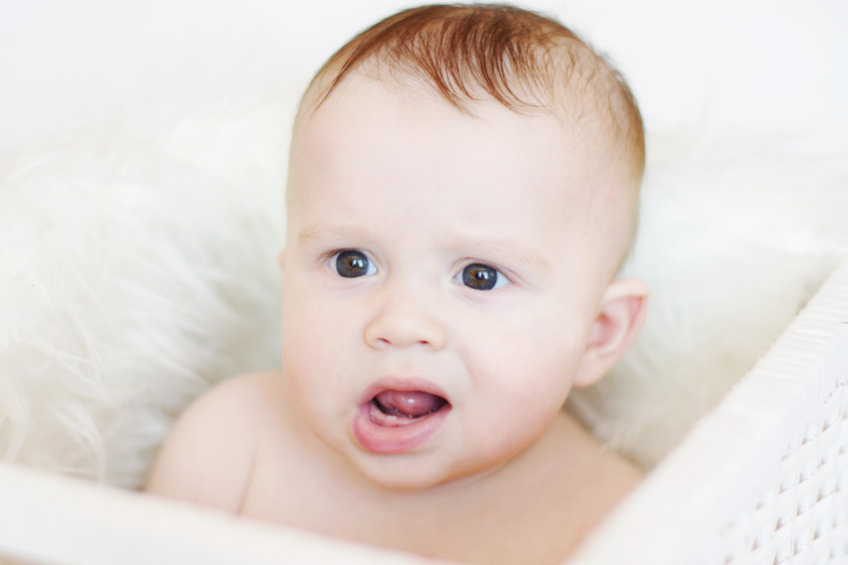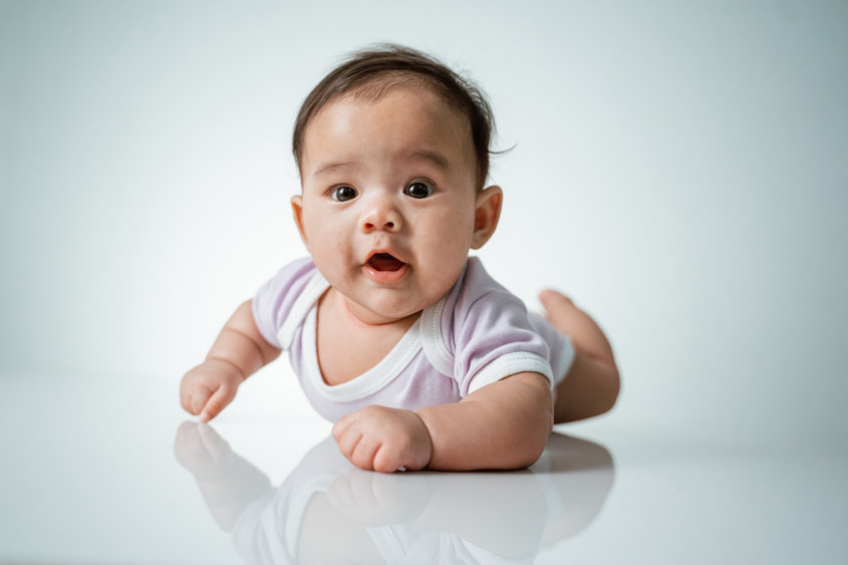My Baby’s Face Is Asymmetrical
/
Hi there, you loving and devoted mom of the cutest baby in the world. You’re the mother of a baby already being treated gently and effectively for torticollis (twisted or wry neck syndrome). Therapy and home care are progressing nicely, and you are so thankful that you started with therapy so soon after the baby was born. You were astute enough to notice that your baby was turning her head in one direction more than the other and also the head had a slight tilt to it. Lucky for you that your doctor was on to it as well and sent you to a competent therapist to take care of the problem. Torticollis or wryneck syndrome sometimes go hand in hand with flat head syndrome in babies. This condition expresses itself when the baby does not turn his head to both sides or favors one side more than the other. There is some kind of weakness in the muscles on that side of the neck that is causing the baby to favor one side over the other.

Case #1
In addition to physical therapy at the therapy center you are practicing the exercises diligently at home as instructed. What more can a mom do? However, you are so distressed at a time which should be the happiest for a first-time mom such as you, your baby has started smiling. Who could be more proud and grateful that as you look at your baby with such love and thankfulness that she is actually responding with a smile? Originally when your newborn smiled a lopsided smile in her sleep it was attributed by experienced relatives to gas. Now, she is actually responding in a straightforward way, but her smile is still crooked. What is actually going on?
Case #2
For your information here is another case of mom in a similar situation. She has been taking her baby boy for physical therapy for torticollis since he was four months old. She does most of the therapy at home just like you do and has some very gentle neck exercises at the therapy sessions as well. His improvement is amazing since he started out with a horrible tilt and not being able to turn one way at all. While looking in the mirror with him recently, the face that reflected back at his mother looked totally different in the mirror as opposed to looking at him directly. She had not noticed that his cheek and eye are actually larger on one side of his face. This young mother has a friend whose baby has obvious facial asymmetry and the friend’s physical therapist assured the friend that the asymmetry will improve by itself. Her pediatrician and physical therapist both claim that even though he moves around on the floor, his head and neck tone is low.
So, Should She Worry or Not?
Mirror Imaging
Although we will not attempt to diagnose the above question about the mom who only noticed her baby’s asymmetrical face in the mirror, we will discuss the difference between 2D and 3D mirror images. Have you ever heard the phrase; the mirror adds ten pounds? A mirror in a similar way to a photo reflects a 2D image. No matter how clear and sharp and accurate the mirror is (we are not talking about fun house distorted mirrors) it is still only a two-dimensional image. That is why, when looking at your baby in real time it is different from looking at him or her in the mirror.
The same is true for yourself; what you are seeing in a mirror is not the same three-dimensional image that your friend is seeing. For example, you may ask your friend if you look as if you gained weight and your friend will deny it. She is not seeing what you are seeing in the mirror.
The wisest thing to do if you are concerned about your baby’s facial asymmetry is to show the baby to the doctor and express your specific concerns. Your doctor should be able to tell you if your baby’s facial asymmetry is within normal range.
Both these moms are doing everything right and they still do not know for sure if they are getting the right advice or proceeding in the right direction. Many people have crooked smiles. The face is not a carbon copy from one side to the other nor is it a Rorschach test paper. According to Rorschach.org, founded by Mark W. Matthews, PHD, “The test is conducted by a professional psychologist on subjects ranging between ages 5 and adulthood. Administrators typically sit side-by-side to ensure they do not influence the participants answers”. It is only human for one side of the face to be slightly different than the other. However, when it’s quite noticeable it is called Asymmetrical Jaw. There are several reasons why a more off-center jawline occurs. It could be genetic, trauma, from a virus such as Bell’s Palsy, or torticollis. Let’s look at these other reasons for the misalignment of the jaw.

This condition can occur due to weakening of the facial nerves due to stroke or Bell’s Palsy. Bell’s Palsy is generally a temporary paralysis of the facial nerves on one side of the face. This is due to a weakening of the muscles. Once in a while the jaw muscles will not fully recover and there will be a slight tilt to the look of the smile. Stroke damage could be more severe and require intense therapy. It’s so sad when after a stroke you see the victim who used to be a happy person and is unable to express his delight since his smile is literally not working.
Asymmetric Crying Baby Face
You may have a baby who looks perfectly normal until it cries. You are probably familiar with that look when one side of the lip goes down while the other side stays up. This happens because of the weakness in the muscles that control the downward motion of the lower lip called the depressor labii inferioris muscle. Interestingly in 80% of the cases it affects the left side of the face. This is a very common occurrence and is usually nothing to worry about. If your baby’s crooked smile is not that bad you may be able to get away with some natural home remedies.
Natural Home Solutions
1) Facial stretches: Get your baby to look up at something and pull the lower lip on top of the upper lip.
2) Cheek toning: With three fingers from each hand, press the upper cheek. While the baby smiles, push the muscles towards the jawline.
3) Alternating sides regularly while breastfeeding or bottle feeding gives equal chance for each side of the face to develop muscle tone.
These exercises are also effective for adults as well as children. If a person has grown up and then notices that he or she has an uneven smile, they could try these simple exercises. If these movements are not effective you can go to the next level of nonsurgical cosmetic procedures such as facial implants or fillers (which are more expensive). If these do not satisfy you, you may decide to get in touch with an orthodontic and dental surgeon for further treatment.
Final Words
Each and every one of us have our own unique smile and facial features. This is what makes you, you. An asymmetrical face is both common and completely normal. It could be genetic or something that happens when the baby is still in the mother’s womb. It sometimes comes as a complication of torticollis and can be treated effectively with gentle facial exercises or physical therapy. In adults it could possibly have to do with an underlying medical condition that should be addressed.
As a caring parent there is always a dilemma of which should be addressed practically. On the one hand, the parent knows best since he or she is with the baby during most of the day. So even if a doctor says something is nothing to worry about, a parent has a sixth sense, and they should act on it accordingly. However, on the other hand, a slight facial unevenness should not be of a major concern if it is not present in conjunction with another condition such as torticollis. In such cases the face is not being used evenly and there is a chance that the asymmetry can increase.

This unevenness can be addressed on the visits to the physical therapist who may be able to advise the parents about some gentle at home exercises. If your baby just has asymmetry when crying this is a very common occurrence in normal babies. So, yes you as a parent should be aware of any abnormal looking occurrences and be proactive. This is especially true with plagiocephaly or flat head syndrome. Many times, this easy to remedy condition is overlooked or underemphasized with a baby turning into a child and then an adult with a social disadvantage.

Cranial Therapy Centers is the only early interventions cranial center in the United States which provides both helmet and manual therapy treatment. We are American Board for Certification in Orthotics, Prosthetics and Pedorthics Facility. Visit us in Lakewood NJ, at 1352 River Ave Unit 14, Lakewood NJ, 08701 or in Teaneck NJ at 1086 Teaneck Road Suite 3F, Teaneck, NJ 07666. You can also email us info@cranialtherapycenters.com
